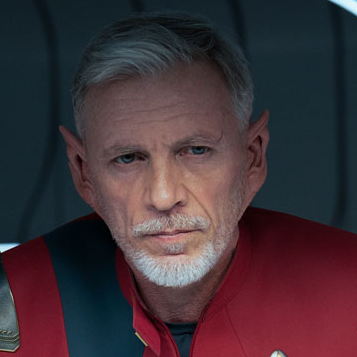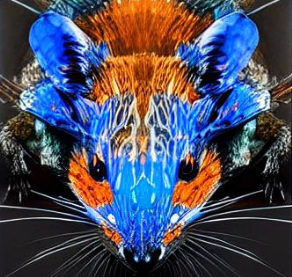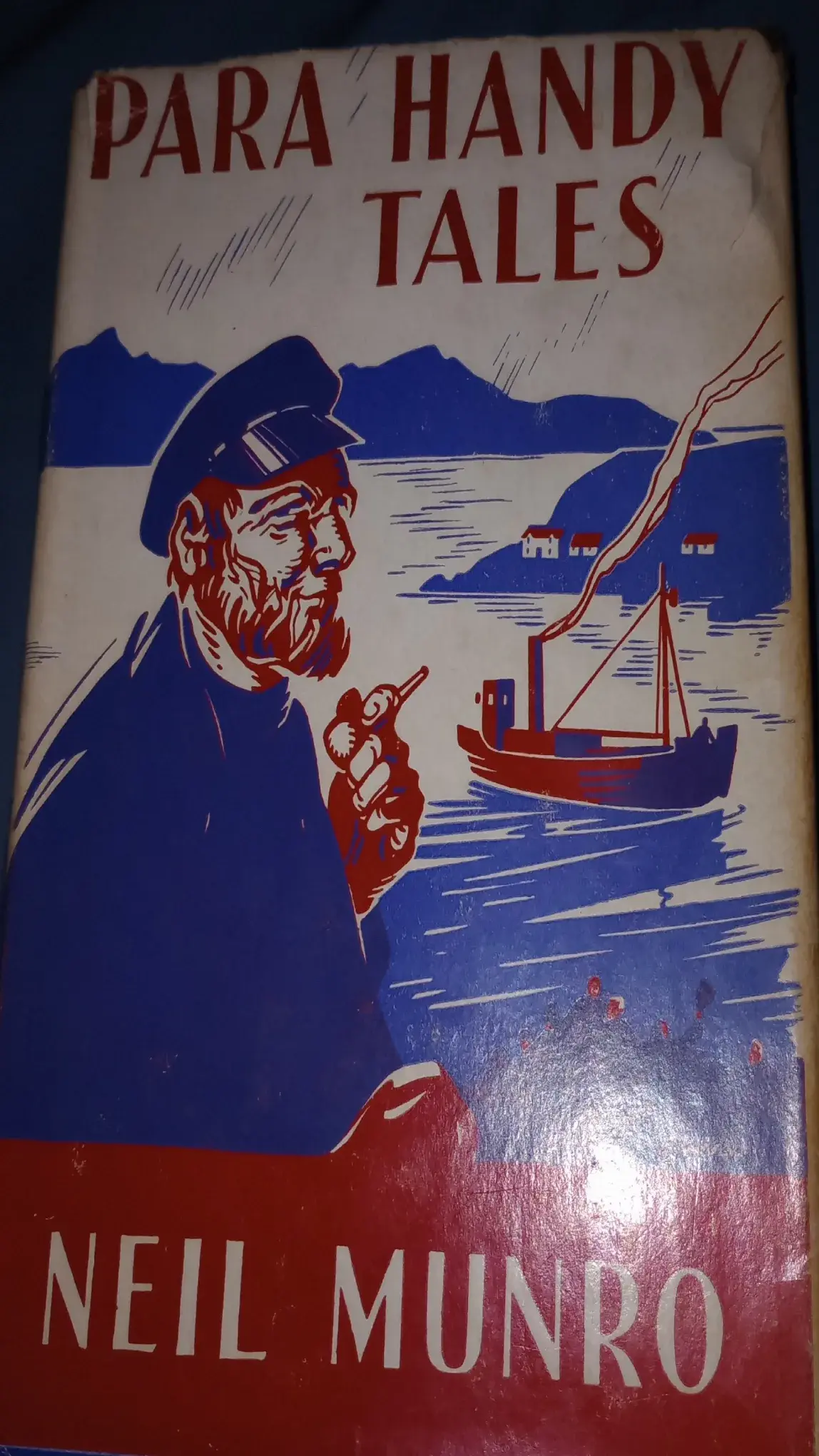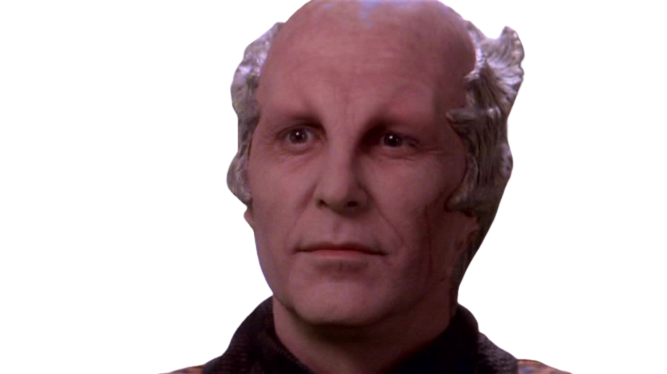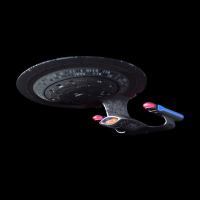Logline
Captain Pike and his crew welcome a Klingon defector aboard the USS Enterprise, but his presence triggers the revelation of some shocking secrets.
Written by Davy Perez
Directed by Jeff Byrd
2x07: Wacky crossover with the comedy cartoon!
2x08: WAR IS HELL, NOBODY IS INNOCENT, MORALITY IS GREY, FORGIVENESS IS QUESTIONABLE, AND THE FRIENDLY DOCTOR MAY OR MAY NOT HAVE DELIBERATELY KILLED A GUY IN COLD BLOOD
2x09: Musical!
Find you a show that can do both.
Buffy
Mom
Once more with feelingStargate
Wormhole Xtreme
The tombBut yeah had to go quite far back
Edit also how could I forget what seems an inspiration of this episode M*A*S*H
Edit also how could I forget what seems an inspiration of this episode MAS*H
Yes, definitely had a MASH vibe.
I want to call out to everyone the BRILLIANT usage of the medical transporter incoming warning during the war scenes of the episode.
I don’t have PTSD, but I do have cPTSD which is close enough, and the way the sound designers utilized that medical transporter incoming warning seemed VERY clearly an attempt to demonstrate to viewers how PTSD triggers are formed.
Like–so many shows focus on explosions and stuff as a PTSD trigger. Because usually you talk about the soldiers as the vets, not the support personnel.
But with the MEDICS–that sound, going off again and again and again, when they were already overwhelmed and didn’t have the staff or equipment to deal with the incoming wounded…
It’s so clear to me that that sound alone, telling them they’re about to get more dumped on their head when they can’t even deal with the ones they already have, is meant to be fixated in the viewer’s memory to sort of demonstrate how it’d get lodged as a trigger in the medic’s memories.
It was just a fantastic use of sound design to help tell the story. They did it with such a deft hand that it didn’t come off as poor sound design (as it could have), but was still CONSTANTLY THERE, putting everyone on edge.
I wouldn’t be at all surprised if we hear that sound in a later episode and either Chapel or M’Benga (or both) completely hit the roof.
Edit: Unrelated to the sound, I also like how they had M’Benga and Chapel fix up the young man, even resorting to “medieval” medicine by manually pumping his heart–only for him to go out and then COME BACK dead.
It just gives a feeling of hopelessness. They spent so much time fixing him up–and he died anyhow after he was sent back into the meat grinder.
All of what you described gave me strong MASH vibes and me the think the writers had to have loved that show.
When the transporters were being announced, I thought of the choppers coming in and how they all mobilized to deal with it including getting people out of the way so new patients could arrive.
Not to mention the great but heart breaking episodes where they did have to choose one life over another and that was their job in wartime. So incredibly heartbreaking in a comedy show, heartbreaking in a scifi show, yet so poignant.
@poundsignbuttstuff @startrek The war scenes definitely reminded me of the serious side of M*A*S*H.
So… I have loved this entire season but I am not sure about this one.
I’m a vet with PTSD, and I’ll preface my upcoming comments by simply stating that maybe it hit close to home and made me uncomfortable. Maybe dealing with those feelings clouded my perception of the episode. However, the TNG and DS9 episodes dealing with PTSD are some of my favorite and are actually therapeutic for me, so maybe that’s not the case.
Ultimately, the message was dour and I resent it a little since it implies that there isn’t any healing that can occur from this type of trauma, which I believe is completely false. Sure, there might not be any healing for M’Benga as a character, but the thematic message of the episode implied some stuff I’m not really a fan of.
Furthermore, how is Pike supposed to operate as a Captain after both M’Benga and Chapel have committed conspiracy to cover up a murder? I think I will just have to head-canon this episode way. It’ll join “Sons of Mogh” as an episode I just pretend never happened.
I’m fine with a bit of moral ambiguity in Star Trek. But I think this episode crossed a line. Hopefully we will see fallout from this come up later in the show.
I really hate typing this but M’Benga went from possibly my favorite character on the show to someone I sort of resent. And I feel like Chapel is right there alongside him. And it made Pike look ineffectual as a leader- he really should have reprimanded Ortegas.
Plus, back to it again, lying about the blade is conspiracy and it really shattered my perception of those two characters.
Anyways, this is just me rambling. I’ll say something positive about the episode: I enjoyed seeing Spock struggle with seeing Chapel in distress and finally figuring out he needed to step away.
I understand your reaction.
For me, this is in many ways a less dark and cynical take than DS9 In the Pale Moonlight and certainly the Section 31 references.
What was critical here was the difference between the journey of individual traumatized officers who had been forced repeatedly to take actions in wartime that compromised their values, and brought out capabilities they never sought to own, vs Starfleet leadership taking cynical action. It’s also a direct outcome of Starfleet’s cynical actions in having M’Benga develop the serum and then use it.
Starfleet’s postwar directive, and Pike’s insistence on pressing it with his senior officers, created the immediate crisis.
However, we need to take account of the fact that it was the ambassador’s own repeated insistence on confronting, engaging and attempting to recruit M’Benga to assist in his mission that led to the break.
M’Benga seemed to be processing his trauma and managing it as well as he could. He wasn’t at the point of exposing the ambassador’s deceit although he appeared to have been contemplating it.
It was the ambassador’s decision to seek M’Benga out again, in his own safe space, his private office, and own refusal to take M’Benga’s rejection that seemed to take the contemplation to action.
The cover up by Chapel and M’Benga is serious, and in the case of M’Benga this is the second case of his hiding something of significance from his captain. He’s an understandable but grey character, and we will have to see where the show takes him.
In Chapel’s case, we have been shown that her bright effervescence hides much darker experiences. It’s now easier to imagine how she will evolves to the very restrained version of herself in TOS.
I feel this is a very authentic portrayal of the chronic legacy unaddressed of trauma in individuals, how a military service and society will need to move on after a society-wide war when its individuals are not yet ready to do so, and how disasterous the potential outcomes when the divide been societal and individual needs in healing are ignored.
It’s not the 24th century Starfleet we’re seeing where there has been a long period of peace and officers can be treated effectively for trauma before returning to duty and it locks in with chronic effects.
I agree that it does not show Pike’s leadership in a positive light, but I find it realistic. What it does show is the gulf between war veterans and those senior officers who, while veterans of other kinds of conflicts, were not involved.
Starfleet needs senior officers, without direct personal history, like Pike to lead the peace and move forward, just as the western allies needed to find a way with some German leaders and scientists after WW2. But not every individual at the front can withstand the stress of that direct engagement with a former enemy.
Starfleet’s order to force veterans into direct contact with a former enemy was psychologically unhealthy and unrealistic, but a value-focused officer like Pike would not have the insight to see that.
This gulf was underscored at a personal level by Chapel’s conversation with Spock, when she could not share her experience with him and he could not ease her pain. The scene between them was an essential confirmation.
What I found interesting is that Number One had the best read on the situation. She saw the pressure the ambassador was putting directly on the veterans in the crew.
As the executive officer, it’s her job to manage personnel, to assess readiness, to deliver a functioning ship for the captain’s command. She accurately saw the problem and recommended action to mitigate the situation by reducing the time to deliver the ambassador to Starbase 24.
What she was not able to do however was to convince Pike to stand down a bit on Starfleet’s toxic order to require veterans of the war to show acceptance of the ambassador. Nor did we see her attempt to try to convince Pike. He was leading from his values and unable to really take measure of its impact on the individuals.
I find it interesting that this show is giving us episodes that show the negatives of Pike’s command style as well as the strengths. While we’ve seen the negatives in Kirk’s and Picard’s temperament’s and command styles acknowledged in the movies and in Picard, this seems to be the first time we’ve had it done with a hero captain in an ongoing television series when he’s in active command of the ship.
@StillPaisleyCat@startrek.website Although I wish some of Pike’s dialogue had been fleshed out a bit to make him feel like less of a generic foil for M’Benga (especially in their scene near the end), I do really like that they had the lead character of the show be the one who doesn’t get it, and in a way that’s in keeping with his characterization (it ties in particularly well with last season’s alternate-timeline Romulan episode, I think).
I’m not a vet and I don’t have PTSD but my girlfriend and I had some pretty similar issues to you with this episode. I think, thankfully, the episode doesn’t seem to expect us to think that M’benga was “right” at the end, or to be happy about what happened, and the final scene between him and Pike is critically important because I don’t think Pike is supposed to look foolish in that scene. Absent that, this episode would feel really gross to me.
As it is, really the only way I can work with this is knowing that the actual arc here is the enormous one that concludes with Star Trek VI, a movie that I feel only gets more radical with every year that passes and every rewatch I give it. Kirk’s realization that he has to let go of all the pain and anger in that movie and allow the world to move on and healing to begin is, when you get down to it, maybe the most optimistic and important message the franchise has ever really tried to express, and if this episode exists as a “middle chapter” between the war itself and that eventual endpoint…well…I can work with it as that middle chapter. But I still feel pretty crummy about it.
Can we just have a quick shout out to Jess Bush who is such a talented actress. Nurse Chapel experiencing RAGE was so convincing!
She is really good. I loved TOS, I loved other things Majel did, but I never thought before this show I’d actually be taking the Nurse Chapel character seriously.
@rob_t_firefly @stuck Strange New Worlds has two excellent stand-ins for Majel, and I am always glad to see my daughter’s namesake celebrated by giving her roles such respect.
@stuck Terrific performance, and a great re-imagining of a character that was woefully underserved in TOS.
@ValueSubtracted
Did anyone else wonder (spoiler warning):When Rah arrives on Enterprise, all the war vets hate him, but did M’Benga’s damaged mind actually awaken his military instincts as a defence mechanism, compelling him to “finish” the unfinished mission to kill Rah?
When M’Benga & Rah first spar, M’Benga says he thought about not showing up but changed his mind because “Klingon judo is good exercise”. Does he then use the session in a safe environment to A) trick Rah into…
@ValueSubtracted …thinking he is the superior fighter, and B) test if he can get a quick, sharp attack past his guard? Was he prepping in case he wanted/needed to kill him?
We don’t see the end fight, but we believe from M’Benga looking Pike in the eyes, twice saying “I didn’t start the fight” that he didn’t.
However, in M’Benga’s PTSD-ridden mind, where he never “finished” the mission to kill Rah, maybe he really doesn’t think he started it, because Rah “started it” on J’Gal?
@ValueSubtracted This could be the case whether or not Rah started the fight at the end, but after rewatching, it feels like M’Benga’s actions were all preparing for that outcome (or preparing to protect himself?) Rah of course also has a motive to kill M’Benga - he’s the only person who knows what actually happened with the Klingon commanders on J’Gal.
One of SNW’s strongest episodes. My only critique would be that there’s no way Starfleet would let it slide that a crew member killed a very important ambassador — no matter what the story. There’d better be a future episode where Starfleet leadership tries to throw Mbenga under the bus or something.
Also, please spend a little more money on the Klingon headpiece so it doesn’t look like it came from Party City.
Up until the final scene, I was loving the episode. I’m still not sure I feel about that ending. But you are probably on to seomthign that there will be a follow up episode next season.
That Klingon headpiece and wig combination was evoking bad clown makeup.
The shininess of the prosthesis and lack of significant colour grading of the ridges made it appear all the more fake. I am not getting why so many fans think this is an improvement.
He may well be one of the “humanized” Klingons from the Augment virus, who is using prostheses to look like uninfected Klingons. Or who had less-than-successful plastic surgery for the same reason. But didn’t yet modify the human style teeth.
At this point in the timeline there’s probably a mix of original ridged Klingons, TOS-type humanized Klingons, surgically and prostheses-restored Klingons, and overreacted-gene-therapy blue/grey double-nostrilled Discovery-style Klingons running around. Probably on separate ships so they don’t have to look at or be looked at by other style Klingons who consider each other dishonored.
A mix of Klingon types is a very compelling situation and I’d really welcome seeing it in a live action show.
I understand why the EPs wanted, practically to pull back from the full face printed prostheses that have been the norm on Discovery for all aliens. They very much impede expression. It takes a lot for the actors to project their performance through.
However the Klingons in SNW aren’t quite working. Somehow, depending on lighting, they have a very plastic quality that does not give a natural skin effect in UHD.
The ones we saw in the season premiere varied in this to some degree, but under the brightness of the lighting on Enterprise it was extremely evident in some scenes. The kind of airbrushing that was done for Worf on the latex prostheses back in the 90s likely wouldn’t work in UHD, but what they’ve got just isn’t working on our OLED.
On the other hand, I found the Andorian special forces officer to be the best Andorian of the current era.
isnt it meant to be a halfway house between TOS to TNG
Seems more like a midpoint between TNG and DSC designs to me. He has that nondescript head ridge from DSC’s Klingons, for instance.
Wow. There’s no contest anymore: SNW is undoubtedly the best new Trek. This season has been fantastic. Somehow they’ve just outdone last week’s crossover. And they just did war ‘better’ than DS9.
Steady now, DS9 has so much more breadth to war than what we just saw. The pacing was too fast for a single episode with such gravitas for me. The final act in particular was rushed. A doctor as the real butcher (!), the ambassador without a real right of reply, and the implications of a cover up from 2 starfleet officers, one of which lied to the captain. The use of a banned serum also clouding the episode too, combined with special forces. A lack of chapel’s report.
I suspect at least 10 minutes on the cutting room floor here. Wish it was there
Don’t get me wrong. One of the best EVER in trek, I was glued from start to finish. But afterwards I wanted a two parter! Bring back some doubles please script writers and producers
I look forward to seeing someone write in retrospect a deep dive into a comparison of M’Benga and Bashir in wartime. The two felt the same emotions, dealt with the same decisions, and had to deal with tough choices and the inherent struggle of the Hippocratic oath in wartime yet both of them handled it so incredibly differently.
That is a Daystrom essay I look forward to reading.
OK. Yes. I don’t mean to say its take on war is better than the entirety of DS9, but as a single episode (with the benefit of modern effects tech) it sure dived straight into the horror of it all! Then landed at a dark place with a conclusion that really isn’t justice.
As someone else mentioned in another comment, it’s bonkers that SNW can do a cartoon episode, a war episode and a musical episode back-to-back. I love now experimental SNW is!
Elevating a notorious enemy general to the position of ambassador in a handful of years is a total Starfleet move.
“We turned this war criminal into a crusader for peace. Just imagine what we’ll do to you, punk.”
Quark: I want you to try something for me. Take a sip of this.
Garak: What is it?
Quark: A human drink. It’s called root beer.
Garak: I don’t know.
Quark: Come on. Aren’t you just a little bit curious?
Quark: What do you think?
Garak: It’s vile.
Quark: I know. It’s so bubbly and cloying and happy.
Garak: Just like the Federation.
Quark: But you know what’s really frightening? If you drink enough of it, you begin to like it.
Garak: It’s insidious.
Quark: Just like the Federation.
Such an amazing scene and seeing it written makes me respect those two actors so much more. There isn’t really a lot said on the page but their acting really sold that scene and made it spectacular.
I can’t imagine being the writer on the show who wrote that and then saw it acted by those two. I’d have thought I was the best writer ever but the writer had a great analogy and it was the actors that made it sing (and director, editor, producers, etc.)
Not much to say beyond this episode was amazing. I love how this crew can do it all - lighthearted comedy, to dark, emotional drama. The scars that Ortegas, Chapel, and M’Benga wore in this episode felt real. When Chapel hesitated at knocking the one guy out of the pattern buffer, and M’Benga just cooly smacked the button, it was a clear reminder that war is hell and it breaks people.
This episode exists because of the stupid Starfleet rule of having traumatized veterans of the war have to interact positively with the supposedly bad-to-good turned war crime enemy. That’s a classic example of people acting stupid for “plot” (e.g. we couldn’t have this episode without the stupid bit).
This was one of the best “connective tissue” episodes of Star Trek I’ve ever seen.
It provides context and ties together the Discovery Era “T’Kuvma War” with the eventual outcome in “The Undiscovered Country”, while providing a layered, accurate and evocative image of Klingon Honor and “perceived honor” while staying true to the lore and expanding it in meaningful ways. It also has strong shades of “The Siege of AR-558”. It now “makes sense” how the Klingons got from TOS to TNG. Wow!Dr. M’Benga is fast becoming one of my favorite characters. Robert Wisdom’s Dak’Rah was terrific too!
Heghlu’meH QaQ jajvam
Edit: Spelling, Phrasing
Erica, the doctor, and Christine, throughout the entire episode: “Don’t believe him. Don’t trust him. Let him die.”
Dang, man…what a whiplash from last week’s episode. From slapstick funny to Siege of AR-558 in 10 seconds flat. LOL.
Excellent episode, though. I’ve got to say that M’Benga being basically a butcher was not something I expected.
I heard some people complaining about this on a podcast but my view is that they’re doing a good job alternating between the heavier episodes and the more lighthearted episodes. If we had 5 light hearted followed by 5 heavy episodes, it would be more jarring than alternating as they have been.
This is the episodic show for which the fans have been begging for years. Now that we have it and get the fun episodes mixed with the harder hitting episodes, some people have complaints.
We also have to consider that they are getting 10 episodes instead of 26 or 22. You’re not getting 8 good episodes, 8 meh episodes, and 6 bad episodes anymore (thos is a reference to how screenwriters viewed episodes at the time). Now we have 10 episodes that need to be on point with maybe a couple meh episodes.
In my opinion, the best way to do that is to alternate as they have. Not everyone wants a serious episode every week (like all those complaining that Star Trek has become too dark) and not everyone likes the silly episodes (as referenced by those who didn’t like the crossover). By alternating, you get that old school Trek, episodic story telling that make Trek so great to begin with.
I know you weren’t saying all those things I’m alluding to but I was talking to my radio in the car as they were saying these things today and your comment brought those thoughts back out.
I mean, I keep thinking back to all the silly episodes of TNG, DS9, and VOY. Personally they are some of my favorites and don’t detract from the more serious episodes at all.
Well, the previously inexplicable “inject a bunch of drugs to fight Klingons” scene in the season opener has suddenly paid off.
I have little to say now except that this episode was a seriously heavy hitter. Just… wow. And ouch.
Even with this “backstory” of this green juice, it really isn’t much of a backstory. It’s just explained as some chemical that makes you stronger – it still feels like a cheap plot device, and that action sequence in the season opener was still unexpectedly long.
Do we need the backstory? It’s space PCP for war. Jokes aside, look at how many times in war, we (and I mean a collective we because numerous countries have done this over the last century+) have given soldiers, pilots, etc amphetamines and more in order to improve their ability to fight, stay awake, and win the war.
M’Benga made a future drug that does all this which he prefers people don’t use but keeps it just in case he has to save people or survive battles.
That’s all the explanation I need. Old Trek didn’t give us even that much most of the time - just treknobabble.
@poundsignbuttstuff @startrek I thought he says explicitly that it contains adrenaline and pain inhibitors. I’m not sure such a real-world cocktail would have the portrayed effects, but it’s clear they’re trying to ground the concoction realistically.
@williams_482 @triktrek Many fans react badly to the P-12 serum as a lazy plot device, but consider: In key battles, it’d make tactical sense for Klingons to draw Fed soldiers into hand to hand combat, because they’re typically experienced blade warriors. It would then be attractive to the Fed to develop something like P-12 as a counter-tactic. Then consider there is a potential sub-plot exploring the ethics of humans revisiting their Eugenics Wars-era mistakes.
@williams_482 @triktrek (It is mentioned elsewhere that human soldiers in the Eugenics Wars were given drugs to make them better fighters, and human history remembers this as a huge mistake/atrocity).
Think of it as trek adrenaline/speed/meth. In war, governments often try to find drugs they can give soldiers to enhance performance.
deleted by creator
